S o u t h s i d e A u r o r aNear South, including Chicago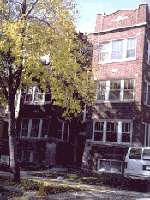 This is where Campbell has her apartment. Details to follow.
This is where Campbell has her apartment. Details to follow.
Russian Quarter This is where Olga's apartment is located. It is not an afluent area, but it
has a degree of quiet and community associated with it. The slavs who live
in the area tend to meet in various stores and small restaurants, giving a
certain character to the place despite the fact that they do not make up the
majority of the inhabitants.
This is where Olga's apartment is located. It is not an afluent area, but it
has a degree of quiet and community associated with it. The slavs who live
in the area tend to meet in various stores and small restaurants, giving a
certain character to the place despite the fact that they do not make up the
majority of the inhabitants.
As with much of the southside, most of the people who live here are African Americans, and there is not much money to go around. But there is a significant divide between these people and the people who live further south. By and large these people have been able to decide to live here, and they are renting their appartments. Landlords keep an eye on properties, and that results in a reasonable physical environment, at least inside the buildings. Despite the Russian Community, the streets themselves are not welcoming to either locals or outsiders. The uninviting nature of the place is a result of largely empty streets, and a sense discomfort that comes when places feel as though they are being shunned. There is a definite sense that people are not on the streets for a reason, even if that reason is not obvious. People who are on the streets walk quickly, keeping to themselves. The neighbourhood streets are not too well kept. The local establishments, on the other hand, exhibit a great deal of variety and an inviting atmosphere, by and large. In the main they are occupied and operated by people of slavic descent, and are considerably warmer to those of European ancestry; while there is no open hostility, the african american population does not seem to patronize these establishments often, and they are not treated the same as the slavs. Middle South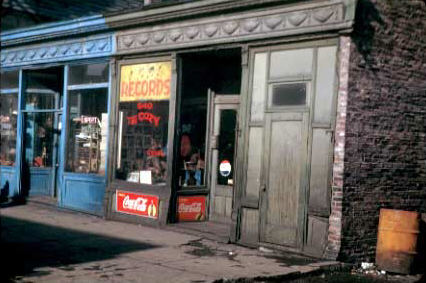 Ruth, Lindsay's friend, has her shop in this area. It shares some aspects of
the Russian Quarter, although parts of it are characterized by significantly
lower incomes. It is an area that is shared by a poor white population and a
similarly disadvantaged african american population.
Ruth, Lindsay's friend, has her shop in this area. It shares some aspects of
the Russian Quarter, although parts of it are characterized by significantly
lower incomes. It is an area that is shared by a poor white population and a
similarly disadvantaged african american population.
There are pockets here where various racial and cultural groups can be found, including hispanic, italian, middle eastern, hungarian, and various other south american and european groups. None of these groups are as completely unified as the slavics of the Russian Quarter, however, and local communities have never really developed. Most of the streets are lined with cars, but few of them are recent. Salt and weather has eaten away at most of the vehicles, and anything which looks even remotely new has some sort of alarm on it. Car alarms go off frequently, however, as few can afford the better made models. The nights have an alarm soundtrack, and few people seem aware of the noise made by their own vehicles - they scream out into the night, unattended. 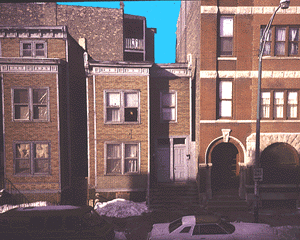 The streets here usually have a scattering of people on them. Some are going
from place to place, but a number are stationary, either talking in groups
or watching those who are passing. Some of these groups amount to small
gangs - several youths who hang out together, perhaps causing trouble - and
there are some more formally organized gangs with as many as two dozen
members. Pagers are a not uncommon method of communication, and the phone
booths are often occupied by youths making short calls ot leave messages.
Mobile phones are not unheard of, but they are definitely uncommon.
The streets here usually have a scattering of people on them. Some are going
from place to place, but a number are stationary, either talking in groups
or watching those who are passing. Some of these groups amount to small
gangs - several youths who hang out together, perhaps causing trouble - and
there are some more formally organized gangs with as many as two dozen
members. Pagers are a not uncommon method of communication, and the phone
booths are often occupied by youths making short calls ot leave messages.
Mobile phones are not unheard of, but they are definitely uncommon.
There is a fair amount of crime in this area, although it tends to center around shifting hostspots. Lots of property damage, a singificant number of breakins and robberies. The stores in the area all have trouble with both shoplifting and theft. Drug dealing is a common occurence on the streets, and even daylight robberies are not uncommon. The police are aware of the problems in the area. In some cases that means that response times are reasonable, while in other places it means there is little point to even reporting minor crimes. The street hoods are used to the environment, and few arrests are made to stick, even when police response is good. The empty apartment was in a less comfortable part of this area. South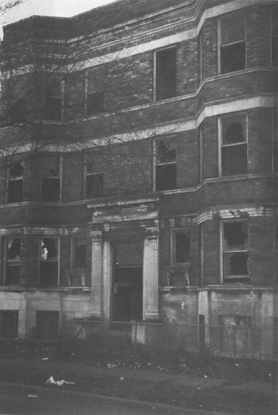 Cas lives in this area. It is one of the largest ghettos in the nation. It is filled with primarily africian americans, although a sizable hispanic population can also be found here. Those who live here are trapped. If they can move elsewhere, they do. For these people, though, there are no roads out - the cycle of poverty, crime, squallor, drugs, and destituion is complete. While many people pay rent to someone for their living space, few, if any, have a real sense of home about their place of abode. The environment is one where there are few real protections for residents, and the daily horrors of the outside are never shut out by the cracked windows, doors, and walls that make up the buildings. Spaces are crowded; there are too many people living here, and there is a constant sense that personal space has been violated on all sides - a relentless gnawing edginess that helps to rachet up the anxiety across the board that little bit more for everyone. And at the same time, there is a general uninhabited feeling about the place, as though people do not live here, do not have places to retreat and rest. It is as though the whole area is a public space, perhaps a train station, or a public toilet - a place that no-one owns and is always in the open, and unprotected, and contested, but most especially a place that has too much empty space, and one that lacks some sort of completion. People live on the streets here. Not only the derranged and forgotten, but a certain number of people simply live where they can. Homes are way-staions, and families are simply familar faces for many people.  Most of the local businesses are liquor stores, bars, and cheap food joints.
Pawn shops manage the transfer of goods from one person to another (although
few people seem to sell their own stuff to them), and few truely new
non-consumable items are purchased. Prices are always too high to be
afordable, and everything is always on permanent discount. It is simply not
possible to pay for rent, food for every day, and the other essentials of
life. Everyone is always short something important, whether it is food,
sanitation, a place to stay. And while it may seem to those from the outside
that the locals are content with such lacks, the truth is that everyone is
always conscious of what they do not have, and what they know they need but
cannot obtain. A constant sense of failure and doom surrounds every part of
every day for these people.
Most of the local businesses are liquor stores, bars, and cheap food joints.
Pawn shops manage the transfer of goods from one person to another (although
few people seem to sell their own stuff to them), and few truely new
non-consumable items are purchased. Prices are always too high to be
afordable, and everything is always on permanent discount. It is simply not
possible to pay for rent, food for every day, and the other essentials of
life. Everyone is always short something important, whether it is food,
sanitation, a place to stay. And while it may seem to those from the outside
that the locals are content with such lacks, the truth is that everyone is
always conscious of what they do not have, and what they know they need but
cannot obtain. A constant sense of failure and doom surrounds every part of
every day for these people.
There are always people on the street. And everyone is always keeping an eye on everyone else. One's life is a public thing. It all takes place out in the open, and you have to be aware of what is going on in every direction. Failure to take proper notice of who is around, or what they are doing can result in anger, confrontation, and violence. 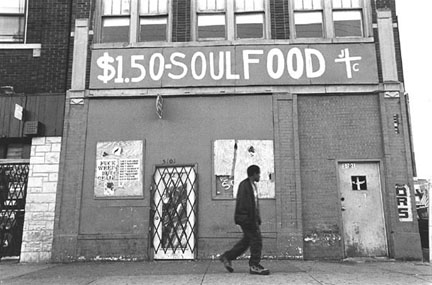 People are always ready - always on edge. Its hard to know what is around
the corner, so they stay constantly prepared for everything. Those with the
right stuff are never more than a sharp word away from throwing a punch.
Conversations escalate to arguments, arguments escalate to confrontations,
confrontations escalate to brawls, and brawls escalate into knife or even
gun fights. And the people on the street know this. They expect this. They
are always only a few moments away from it.
People are always ready - always on edge. Its hard to know what is around
the corner, so they stay constantly prepared for everything. Those with the
right stuff are never more than a sharp word away from throwing a punch.
Conversations escalate to arguments, arguments escalate to confrontations,
confrontations escalate to brawls, and brawls escalate into knife or even
gun fights. And the people on the street know this. They expect this. They
are always only a few moments away from it.
For some that means being ready to run, and making sure to always take a non-threatening posture. For others it means putting aggressive confidence on at all times, trying to overwhelm others before they get the upper hand. For many it means adopting a different posture in different situations - those with authority, like the police, require a subservient posture, because they have no hesitation in beating, charging, and even shooting, the residents of these areas. 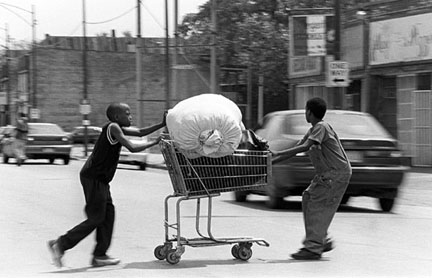 Might makes right in this environment, and most people know who are the dangerous ones. But disputes are frequent, especially when the differences are not clear cut. |